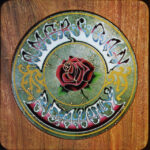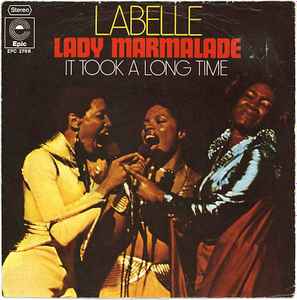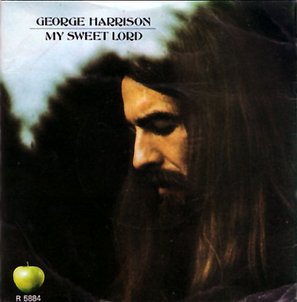 “Friend of the Devil” by the Grateful Dead is one of those songs that has managed to live in multiple musical worlds at once: a folk-infused narrative ballad, a bluegrass-tinged road anthem, and a cornerstone of the jam band ethos that the Dead would pioneer over decades of touring. Written by Jerry Garcia, John Dawson, and Robert Hunter, the track first appeared on the band’s 1970 album American Beauty, an album that marked a turning point in the Grateful Dead’s career. While many associate the band primarily with their long, exploratory improvisations and psychedelic epics, “Friend of the Devil” showcases the Dead’s melodic sensibility, lyrical wit, and storytelling ability, demonstrating that their appeal was as much about craft and narrative as it was about improvisation. Today, decades after its release, the song remains a beloved classic, a touchstone for fans and musicians alike, embodying the freedom, danger, and poetry of the open road.
“Friend of the Devil” by the Grateful Dead is one of those songs that has managed to live in multiple musical worlds at once: a folk-infused narrative ballad, a bluegrass-tinged road anthem, and a cornerstone of the jam band ethos that the Dead would pioneer over decades of touring. Written by Jerry Garcia, John Dawson, and Robert Hunter, the track first appeared on the band’s 1970 album American Beauty, an album that marked a turning point in the Grateful Dead’s career. While many associate the band primarily with their long, exploratory improvisations and psychedelic epics, “Friend of the Devil” showcases the Dead’s melodic sensibility, lyrical wit, and storytelling ability, demonstrating that their appeal was as much about craft and narrative as it was about improvisation. Today, decades after its release, the song remains a beloved classic, a touchstone for fans and musicians alike, embodying the freedom, danger, and poetry of the open road.
The story behind “Friend of the Devil” exemplifies the Dead’s unique ability to blend Americana storytelling with modern sensibilities. The lyrics, penned by Robert Hunter, tell the tale of a fugitive on the run, a man pursued by both law and circumstance, yet he narrates his story with a wry, ironic detachment. From the opening lines, listeners are introduced to a character who is part desperado, part charming rogue: “I lit out from Reno, I was trailed by twenty hounds / Didn’t get to sleep that night until the morning came around.” The song is grounded in narrative tradition, echoing old folk ballads and country storytelling while infusing it with contemporary energy and the Dead’s distinctive musical voice. The outlaw in the song is both a figure of danger and one of sympathy; his adventures and misadventures resonate as metaphors for the human experience, capturing both the thrill and the consequences of living on one’s own terms.
Musically, “Friend of the Devil” is deceptively simple yet profoundly effective. Garcia’s acoustic guitar opens the song with a crisp, clean picking pattern, supported by Phil Lesh’s melodic basslines, Bill Kreutzmann’s steady percussion, and the harmonies of the band, creating a warm and inviting soundscape. Unlike some of the Dead’s more psychedelic or extended jam tracks, this song is concise, structured, and melodic, demonstrating the band’s versatility. The melody is deceptively upbeat, creating an intriguing contrast with the lyrics, which detail the trials and tribulations of the fugitive narrator. This interplay between cheerful instrumentation and slightly dark subject matter is a hallmark of the song’s enduring appeal, allowing listeners to engage both emotionally and rhythmically.
One of the most remarkable aspects of “Friend of the Devil” is how it captures the essence of the Grateful Dead’s live ethos even in its studio form. While the original recording is tight and precise, it contains the seeds of improvisation and interplay that would come to define the Dead’s concerts. Garcia’s guitar lines, though melodic, leave space for interpretation, and the vocal harmonies between Garcia, Lesh, and Bob Weir hint at the communal feel that would permeate live performances. Over decades of touring, “Friend of the Devil” became a staple of the Dead’s setlists, often segueing into extended jams that allowed the band to explore the song’s themes and motifs in real time, making each performance a unique experience for both the band and the audience.
The song’s narrative structure also highlights the band’s lyrical sophistication. Robert Hunter’s lyrics are layered, using clever phrasing, alliteration, and irony to create a story that is both engaging and thought-provoking. The outlaw’s journey is filled with humor, tension, and unexpected detail, painting a vivid picture of life on the edge: “Ran into the Devil, he loaned me twenty bills / I spent the night in Utah in a cave up in the hills.” These lines are more than plot points; they evoke imagery, mood, and character, allowing listeners to inhabit the world of the song. Hunter’s ability to blend narrative storytelling with poetic nuance is one of the reasons the song has remained resonant across generations.
Culturally, “Friend of the Devil” arrived at a pivotal moment in American music. Released in 1970, it coincided with a period of intense experimentation in rock, folk, and country music. The Grateful Dead, emerging from the San Francisco psychedelic scene of the 1960s, were already known for their genre-blending style, mixing rock, blues, folk, and improvisational elements. With American Beauty, the band leaned into folk and country influences, and “Friend of the Devil” became emblematic of this shift. Its success helped solidify the Dead’s reputation not only as masters of improvisation and psychedelic exploration but also as storytellers capable of crafting songs with enduring melodic and lyrical appeal.
The song’s appeal is also generational. For longtime Deadheads, it is a touchstone of the live experience, a song that evokes memories of concerts, road trips, and community. For newer listeners, it offers an accessible entry point into the Dead’s catalog, with its catchy melody, narrative depth, and acoustic warmth. It bridges the gap between casual appreciation and devoted fandom, functioning as both an approachable folk-rock tune and a window into the larger world of the Grateful Dead’s musical universe.
Another reason “Friend of the Devil” has endured is its thematic universality. The song’s protagonist, navigating danger, risk, and freedom, embodies archetypal human struggles. Listeners connect with the tension between desire for autonomy and the consequences of living outside societal norms. The fugitive’s charm and resourcefulness, coupled with his vulnerability, create a character that feels both real and mythic. This blend of narrative complexity and emotional resonance is rare in popular music, and it contributes to the song’s lasting power.
Over the years, the song has also inspired numerous covers and reinterpretations. Artists across genres have taken on “Friend of the Devil,” each bringing their own sensibilities while honoring the original composition. From bluegrass ensembles to solo acoustic performers, the song’s structure and melody lend themselves to reinterpretation, demonstrating its adaptability and timeless quality. These covers have further cemented its status as a classic, allowing it to reach audiences who may never have encountered the Grateful Dead otherwise.
Live performances of the song highlight its dynamic flexibility. While the studio version is concise and focused, in concert, “Friend of the Devil” could stretch into extended explorations, often pairing with songs like “Ripple” or “Uncle John’s Band” to create medleys that reflected the band’s improvisational ethos. Each performance became a new iteration, shaped by the audience, venue, and the band’s mood. This fluidity is part of what has kept the song fresh and relevant, even decades after its original release.
The song also illustrates the Grateful Dead’s mastery of musical layering and interplay. Garcia’s guitar is always conversational, responding to the rhythm section and harmonies in a way that feels spontaneous yet cohesive. Lesh’s bass lines weave melodic threads that support the narrative without overpowering it, while Kreutzmann’s subtle drumming maintains momentum and adds texture. Bob Weir’s rhythm guitar provides both drive and nuance, ensuring that the song’s acoustic warmth is complemented by rock sensibilities. Together, these elements create a musical ecosystem in which storytelling and instrumentation are inseparable.
“Friend of the Devil” also resonates because of its embrace of American musical traditions. By drawing from folk, bluegrass, country, and early rock, the song situates itself within a lineage of storytelling music. It nods to ballads of outlaws and rogues, weaving them into the contemporary rock idiom. This connection to tradition gives the song a depth and authenticity that enhances its emotional impact. It’s a modern folk tale, set to guitar and bass, sung with warmth and wit, and carrying echoes of centuries of narrative songcraft.
In a broader sense, “Friend of the Devil” exemplifies the Grateful Dead’s unique place in music history. The band was never interested solely in commercial success; their focus was on musical exploration, narrative depth, and audience experience. Yet with this song, they achieved something rare: a track that was both artistically authentic and widely beloved. It captured their ethos while also appealing to listeners who might have been new to their sprawling, improvisational world. Its enduring popularity is a testament to its balance of accessibility, storytelling, and musical sophistication.
Even today, decades after its release, “Friend of the Devil” maintains a presence in popular culture. It appears on greatest hits compilations, radio rotations, and streaming playlists, and remains a staple in the repertoires of contemporary acoustic and jam bands. Its themes of pursuit, cunning, and freedom are timeless, allowing it to connect with listeners across generations and geographies. The song’s narrative, instrumentation, and emotive qualities continue to invite new interpretations and emotional connections, ensuring its place in the musical canon.
Ultimately, “Friend of the Devil” by the Grateful Dead is more than just a song; it is a narrative, a journey, and a musical achievement that encapsulates the band’s ability to blend storytelling with improvisation, folk tradition with rock sensibilities, and humor with pathos. Its blend of narrative detail, melodic warmth, and rhythmic drive creates a piece that is instantly recognizable yet endlessly rich, a song that can be both danced to and contemplated. It represents the best of what the Grateful Dead offered to music: authenticity, versatility, and a connection to the human experience. It remains a defining track not only of American Beauty but of the Grateful Dead’s larger legacy, a reminder that even in the pursuit of freedom and adventure, there is artistry, wit, and heart.


